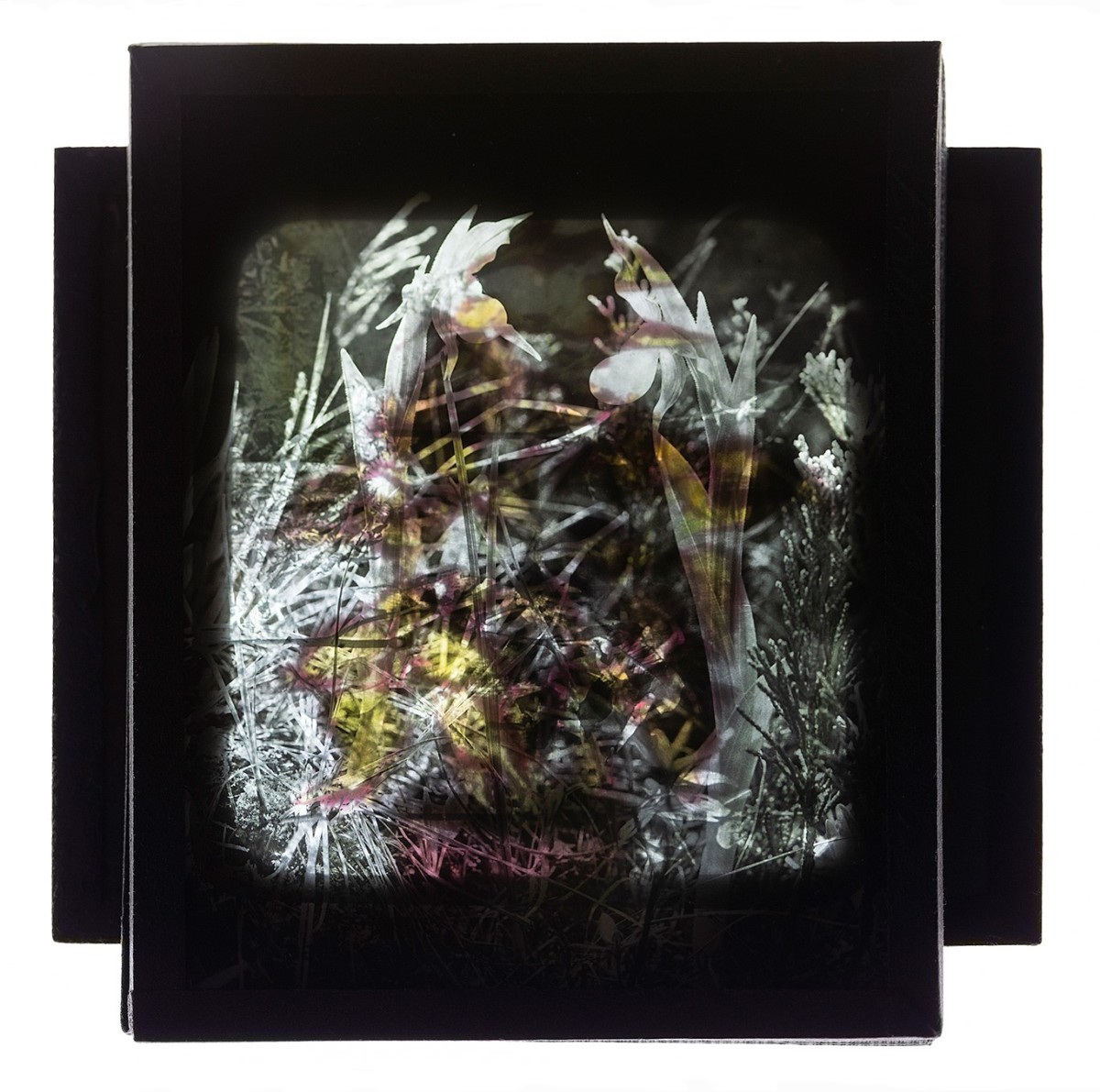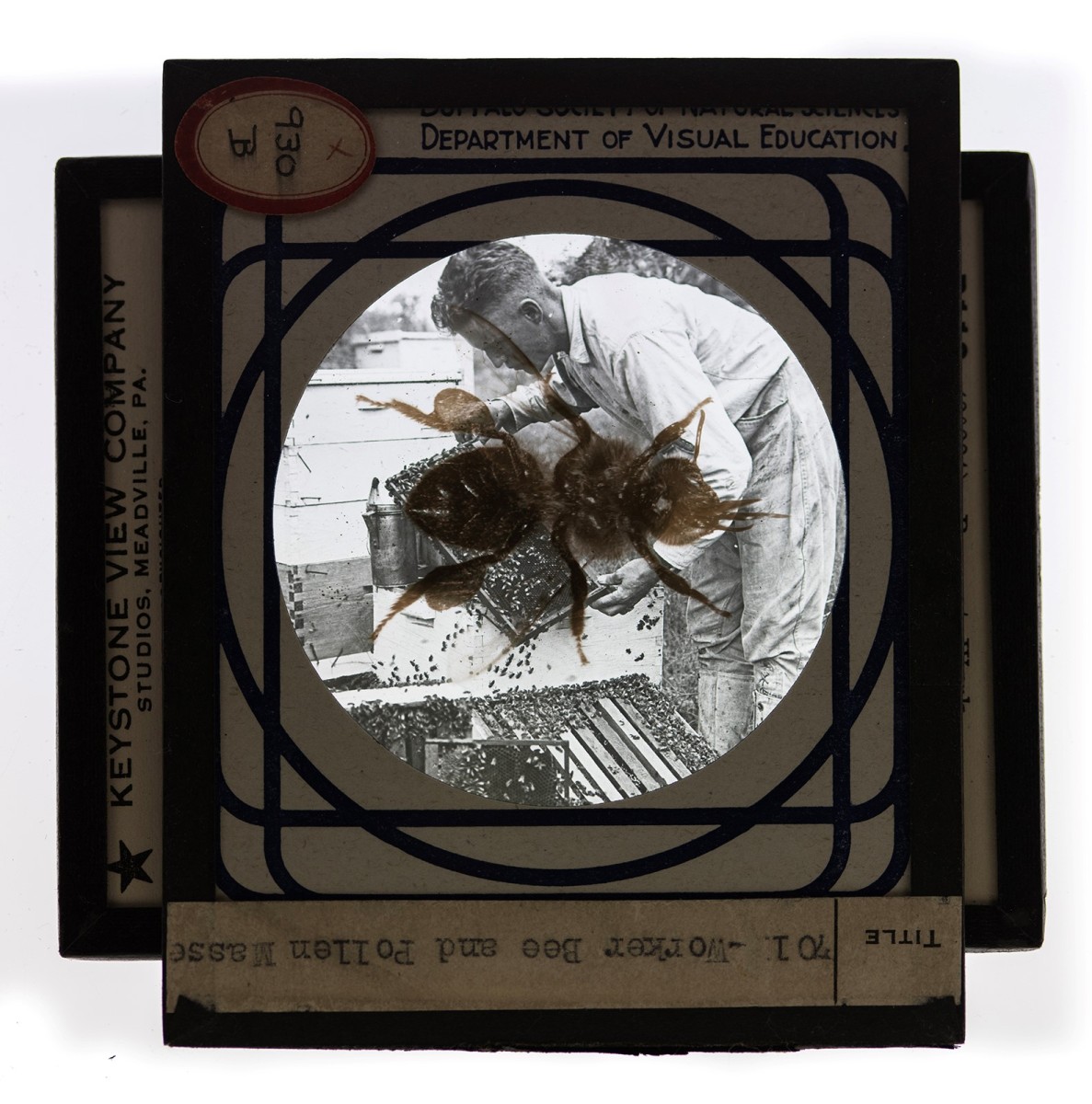Undergrowth
Toronto-based artist Sara Angelucci presents ten years of her art in one solo exhibition at the Varley Art Gallery of Markham.

Sara Angelucci, Nocturnal Botanical Ontario, July 30, 2021 – Bladder Campion, Teasel, Bindweed, Vetch, Daisy Fleabane, Aster, inkjet print, 85.3 x 118.8 cm. Courtesy of Stephen Bulger Gallery
Sara Angelucci’s latest solo exhibition, Undergrowth, brings together several bodies of work by the Toronto-based artist. These projects, all from the past decade, examine how photographic practices have contributed to the divide between humans and nature. Angelucci transforms found photographs to create new images that point to cultural, historical and social conditions outside the image frame. Both intimate and personal, the solo exhibition on view at the Varley Art Gallery of Markham explores themes such as death, loss, science, and the human relationship with the natural world.
Curated by Shannon Anderson, an independent curator as well as curator of the Art Gallery of Mississauga, Undergrowth features several bodies of work, including Aviary (2013), Nocturnal Botanical Ontario (2019-ongoing), Arboretum (2016), Black Flowers (2017) and The Twirl of a Butterfly’s Tongue (2022). Each series includes elements of nature, whether of animals, plants, or landscapes.
Angelucci was previously the AGO’s Artist-In-Residence in 2014, where she explored works from the Canadian Collection related to Canadian nature, aviary and forestry subjects. There, she continued her research into endangered and extinct North American bird species. Working in collaboration with seven women singers, Angelucci created a choral performance titled A Mourning Chorus that explored the sounds of disappearing North American songbirds through the historic framework of women's public mourning rituals.
To learn more about her art practice, we paid a visit to the exhibition and connected with Angelucci and Anderson to learn more.
“My encounter with the Northern Curlew in the Royal Ontario Museum’s ornithology collection in 2012 (wiped out by overhunting and habitat destruction) awakened something deep inside me,” said Angelucci. “While I intellectually understood the notion of extinction, upon holding this exquisite creature, I felt deep grief for what is happening to the Earth. That experience shifted my consciousness to something embodied. Once that channel opened, and I researched the plight of birds in North America, I could no longer look at the world or my backyard in the same way.”
An expression of this discovery by Angelucci comes in the form of large close-up photographs of plants and seeds produced in the dark from the Niagara Escarpment surrounding Angelucci’s cottage in the Pretty River Valley. Using a scanner, she documented the everyday presence of local plants and insect life. The process reveals a mix of living plants in enlarged detail, giving visitors a deep view into an often overlooked environment. Nocturnal Botanical Ontario (2019-ongoing) displays the entanglement of indigenous, invasive and cultivated plant species, revealing the colonial histories behind what has happened to our lands.
“How many of us can distinguish between native, introduced or invasive species? Even from a purely visual standpoint, the scale at which Sara presents these plants makes it possible to see the incredible intricacies in their structures, even in something normally dismissed as ‘just a weed,’” said Anderson.
For Angelucci, this work means much more than what meets the eye. “The impetus to scan plants began after the death of my sister. The grief of losing her made me stop making art and retreat into my small city garden,” she said. “I scanned plants to name what I had previously taken for granted. And I saw things I had never noticed before. My personal grief opened a way for me to look at what was growing entwined at my very feet – introduced, native and invasive species. And I began to ask, how did they all get here?”
Black Flowers (2017) is a series that draws on the tradition and symbolism of flowers as expressions of love, loss and healing. Using a discarded science collection of early twentieth-century glass lantern slides from the Buffalo Society of Natural Sciences, Angelucci layers them to create Victorian mourning bouquets. Now hand-painted in colour, these black-and-white slides were originally used as an educational tool for botanical lectures.
Right in the centre of the room, surrounded by Black Flowers (2017), is a video work titled The Twirl of a Butterfly’s Tongue (2022). It adopts a different perspective based on the same glass lantern slides. Flickering from one slide to the next in rhythm to a musical score, the video speaks to our need to categorize the world and how science and technology have expanded the human capacity for vision.
Angelucci says, “In the video, microscopic, x-ray and telescopic images reflect our obsessive desire to expand our field of vision. Images of every imaginable topic – agriculture, beekeeping, ornithology, botany, star charts, weather – all point to our obsession to know, celebrate and control the natural world.”
Co-presented by the Art Gallery of Sudbury, the Varley Art Gallery of Markham, Tom Thomson Art Gallery, and the Art Gallery of Mississauga, Undergrowth by Sara Angelucci is on view now at the Varley Art Gallery of Markham through April 2023. Click here to learn more about the exhibition.


